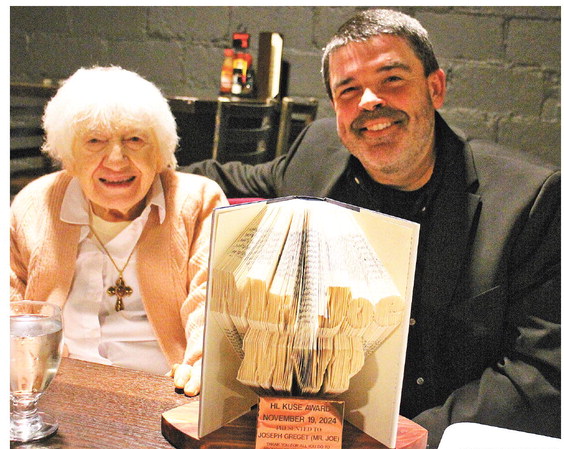County weighs options for dam projects
Members of the Taylor County Forestry and Recreation Committee were left looking at options last week as they received word the county will not receive grant funding for two county dams slated for replacement.
The one bit of good news from the June 19 meeting was that the county will receive a 50% matching grant from the Department of Natural Resources (DNR) to fix the broken sluice gate at Miller Dam.
The Miller Dam project has a total cost of $151,458 with the grant covering $75,729. Forest administrator Jake Walcisak told committee members that Ayres Associates is working on the plans for the sluice gate and will have them ready within the next 90 days. He said the bids for the work would be put out later this summer or fall with construction planned for 2021.
While Walcisak said he hoped for the work to be done primarily underwater with a limited drawdown, the engineer from Ayres, who appeared at the meeting by phone, was less optimistic noting that a larger drawdown may be needed to install the new sluice gate.
Until it is repaired the sluice gate is being kept closed. The gate is a primary way of controlling water level in the Chequamegon Waters Flowage, the county’s largest body of water.
The county’s dam replacement account currently has a balance of $264,239. These funds come from revenues generated from logging operations in the county forest.
“This is a no brainer,” said committee chairman Chuck Zenner saying that the county should move ahead with the project. Committee members agreed.
The fate of the other two countyowned dams is less certain. The county is under DNR orders to make improvements at the Camp 8 dam located in the town of Rib Lake and Chelsea Lake Dam located in the town of Westboro. Given the age of the structures and the work needed, engineering plans call for the dams to be replaced.
The county had been hoping to secure grant funding from the state to cover 50% of the project costs. However, with a competitive environment for the grants, only 23 of the 32 projects seeking grant funding were approved. Projects are awarded points based on a range of criteria with projects with higher points getting funding first. Camp 8 ranked 25 with 174 points and Chelsea Lake Dam ranked 28 with 159 points.
According to Walcisak, the funding cutoff was at about 185 points.
Given how close the Camp 8 project was to the cutoff point, it was especially frustrating for committee members to learn that the project application had been docked 20 points because Ayres Associates had failed to comply with a section of the application requiring project plans to be submitted 30 days prior to the February 28 grant deadline. The plans were submitted to the state on Feb. 13 and were approved on Feb. 27. When asked by committee members about the oversight, the project engineer said that it was just missed and that in past grant cycles all projects had been funded so the deadlines had not been an issue. He told committee members he was sorry they had not met that deadline.
“There is no excuse we should have seen it and caught that,” said the project engineer from Ayres Associates. “There was some complacency that the past two cycles were not competitive,” he said.
Walcisak said he has been in contact with the DNR over it contesting that if they had approved plans prior to the grant application it should count for something compared to just having submitted plans.
One of the challenges of the Camp 8 dam project is its remote location in the county forest and the high cost versus the size and use of the dam. The project has an estimated cost of $322,770. The project includes drawing down the impoundment while the earthen dam is being replaced. The major issue is that the pipe used for drawing down the water level is non functional requiring a diesel pump to be brought in to draw the water level down. This is a contributing factor to the high project cost.
When the county board approved moving ahead with the Camp 8 dam work, it was with the stipulation that the project could only move forward if the county received grant funding to help with the cost. Committee member Mike Bub noted that the project would have qualified for the grant without the Ayres Associates oversight and suggested the county wait and resubmit the project in 2022 with the county doing a mandated spillway realignment.
Walcisak said that is also his recommendation versus the option of applying for a grant to remove the dam.
Committee members discussed the usage of the dam. The campground on the impoundment has between 45 and 50 registered campers staying at it each summer. Additional campground use occurs in the fall with the grouse season and the recreation area is on the ATV trail system. As far as lake usage, it was noted it is mainly locals in the area. However, Walcisak said when meetings were held in the area last year as the county was considering what to do with the dam, there was strong support for keeping it in place.
Committee members agreed with the plan to appeal the grant review findings and if not successful hold off on major work to Camp 8 dam at this time and reapply for the next grant cycle.
Committee members are less willing to wait for getting work done at the Chelsea Lake Dam. The grant application for that project was also docked 20 points for Ayres Associates not submitting the plans by deadline. It was also docked an additional 10 points for not having an updated Emergency Action Plan within the past two years. Walcisak noted the plan was approved by the DNR in December 2019.
For this project, the biggest frustration was with the application being docked 50 points because the grant program says the spillway capacity doesn’t need to be increased and the current spillway is sufficient for a 100-year flood event. At issue is the dikes versus the dam. If seven stop logs are removed prior to a 100-year flood to lower the water level by two feeta manual process involving two people leaning over a pit — then the water will not overtop the dam. However, Walcisak noted the water would overtop the dikes and threaten the lake with failure. It gets thorny because the area DNR dam inspectors flipflop on how they view the dikes. While there is ample evidence the dikes were manmade, they were placed on private lands without any plans being filed with the DNR leading the inspectors to consider them as being natural structures. However, in the management of the lake, the county is being required to take into account the possibility of failure of the dikes as part of the design requirements of the dam.
“The DNR can’t be on both sides of the issue,” Bub said, noting that if the 50 points were put back into the application, it would have been a no-brainer for funding.
Unlike the Camp 8 dam, Bub was less willing to wait, noting the need to address safety concerns with the stop log system and the danger it poses to staff. The design for the project had included a concrete spillway that would not have required the addition or removal of stoplogs.
Zenner noted the county has the funds on hand to pay for the Miller Dam work and to completely pay the work on Chelsea Lake Dam.
Bub asked if there were ways to trim the project back in order to save money. It was noted this may require new engineering studies to be done. As designed the new dam would have an expected service lifespan of 80 plus years. “Perhaps instead of an 80-year dam we build a 40year dam,” he said.
County finance director Larry Brandl also noted that interest rates are low and that the dam work could be built into county borrowing.
Committee member Myron Brooks said he would like to see the county go through the appeal process on both the dams and then wait and resubmit them in two years for the next grant cycle. Walcisak noted the risk of this is that the state may decide to force the county’s hand through the issuance of orders. He noted that in general the state is more lenient with privately-owned dams than with publicly-owned dams. He also noted that if work was delayed on Chelsea, there would be some maintenance projects that would have to be done to make it safe to operate the dam.
It will be up to the full county board to decide the fate of the dams at a board meeting to be held in July or August.


